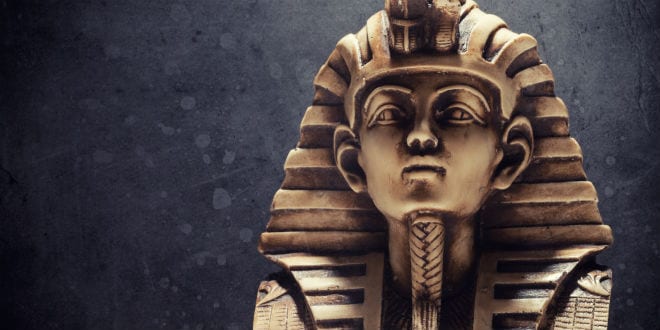A mysterious blade discovered in an Egyptian tomb has finally revealed its secret and the truth is out of this world. Literally.
A mystery that has long baffled Egyptologists has finally been solved. In 1922, British archaeologist Howard Carter opened the sarcophagus of a teenage Pharaoh, Tuankhamun and discovered two knives wrapped in the bandages that bound the mummified remains. The knives presented a dilemma that only grew greater with time. The handle was made of gold and had a pommel of rock crystal. The ornate sheath had a floral lily motif on one side and a feather pattern on the other, terminating with a jackal’s head. What baffled scientists was the iron blade, manufactured in 1300 BCE, which showed no signs of rust.
Researchers have long debated the unique characteristics of these knives but, until now, analyses have proved inconclusive. Italian and Egyptian researchers used an X-ray fluorescence spectrometer, a state-of-the-art, non-invasive technique, to confirm the composition of the iron without damaging it, according to a study published on Thursday in the journal of Meteoritics and Planetary Science. To their surprise, the iron used to make the knife was taken from a meteorite. The knives contained a high nickel content with levels of cobalt that matched samples taken from meteorites in the region, “strongly suggests an extraterrestrial origin”, indicating the Egyptians were the first civilization to extract metal from fallen meteorites.
The scientists compared the composition of the dagger to meteorites that had been discovered in a 2,000km radius around the Red Sea coast of Egypt. One meteorite that was found that 150 miles west of Alexandria contained similar levels of nickel and cobalt.
” In agreement with recent results of metallographic analysis of ancient iron artifacts from Gerzeh, our study confirms that ancient Egyptians attributed great value to meteoritic iron for the production of precious objects”, the study suggested.
The study also noted that meteorites were significant for more than their practical value, saying that, “Beyond the Mediterranean area, the fall of meteorites was perceived as a divine message in other ancient cultures”.
Joyce Tyldesley, a senior lecturer in Egyptology at the University of Manchester, told Al Jazeera, “They are obviously recognizing things that are coming to Earth and imagining that these are the gifts of the gods”.
“The suspicion is that it was actually an import,” she added. “Egyptologists suspect that maybe this was a dagger sent to Egypt from a neighboring state during the reign of Tut’s grandfather. It may have been included in his tomb because it’s a very valuable piece and also because it is a family heirloom that has belonged to his grandfather.”
The knife is now on display at the Egyptian Museum in Cairo.
Tutankhamun, The 11th pharaoh of the 18th dynasty of Ancient Egypt, lived from1336 BCE until 1327 BCE. His tomb was discovered completely intact by British archaeologist Howard Carter in 1922. He is believed to be about 17 when he died and was likely to have inherited the throne at the age of eight or nine. His greatest achievement during his short time on the throne was repairing the damage inflicted upon the temples of Amun during his father Akhenaten’s tenure. It is still unclear how he died and has been suggested that he was assassinated, or died as the result of a hunting injury.




